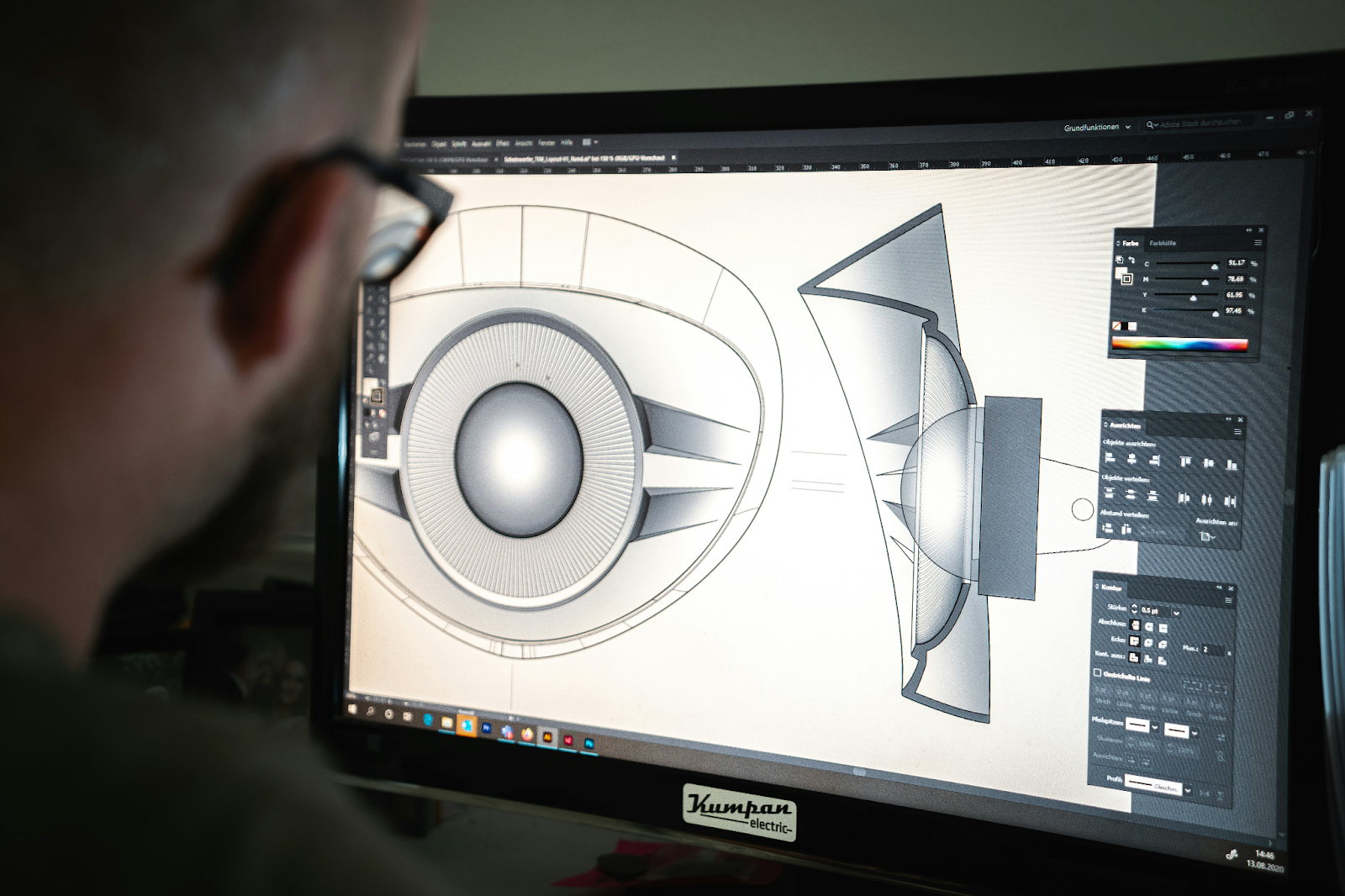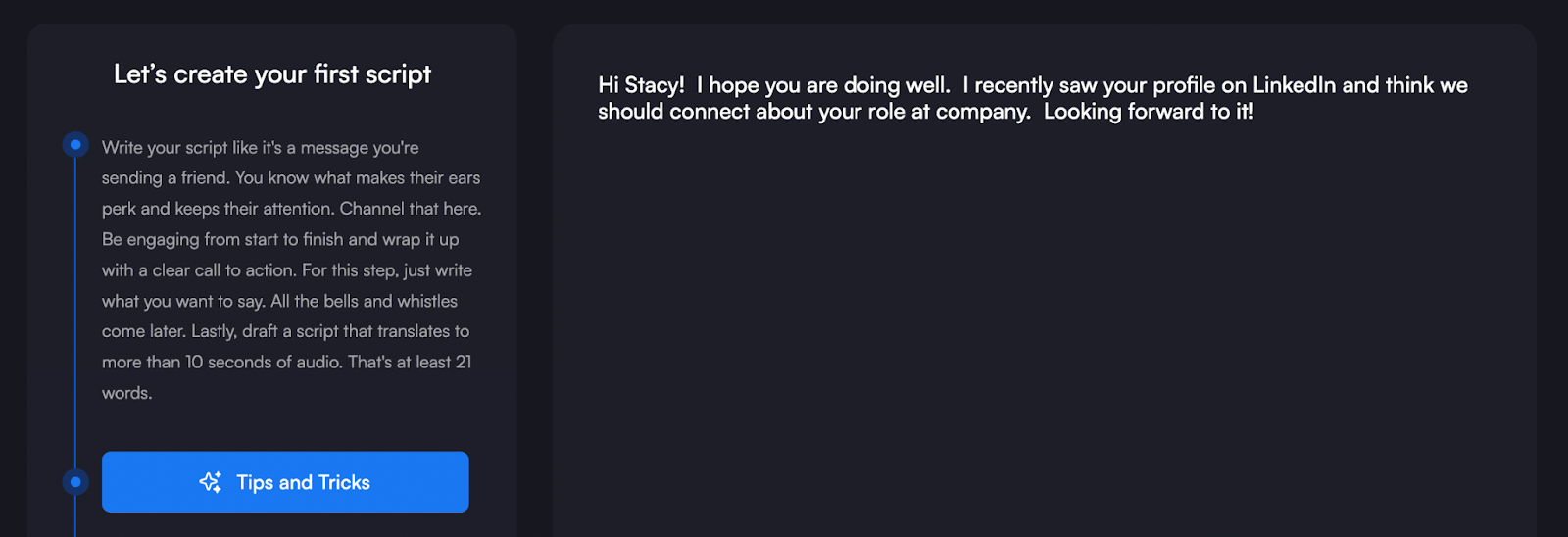All Posts
What is a Digital Replica? [2024 Guide]


Digital replicas have evolved into powerful tools for developers, powering applications that feature realistic avatars as stand-ins for humans during interactions. AI technology is creating new ways to implement this uncanny asset. For those who want to digitally render themselves, complete with expressions, digital replicas can even go as far as rendering digital avatars.
This article will explain digital replicas, identify use cases in different industries, and discuss the benefits and challenges this technology offers. There’s also a quick guide at the end on how developers can easily integrate this technology into their applications.
Similar to the term “replicate,” a digital replica is a digital copy of an object in the real world, intended to emulate, simulate, or match an object and its characteristics. If it’s of a person, it’s like a clone: detailed, and specific to the person. It could be 2D or 3D rendering, but it could also be non-visual, like a cloned voice.
Digital replicas, digital twins, digital humans, and digital avatars are all similar terms with slightly different definitions. A digital twin is a virtual representation of an object or system designed to accurately reflect a physical object. Often used in fields like manufacturing and development, they’re especially useful in product research and testing.
Digital humans are designed to recreate a person. They seek to capture every detail and serve to simulate human action. They are automated and are found in video games where characters are designed to be lifelike.
If a replica is designed with animations controllable by a user, it is known as a digital avatar. It is a surrogacy, where the user guides or designs its movements and actions. This can be found in industries like video games and social media.
Digital replicas have long been used in specialized cases like engineering to help generate and simulate real-world scenarios for product development and testing. It has popularly been used in the entertainment industry to replace a film actor’s face for a scene or emulate a speaker’s voice for narration.
Generative AI is a game-changer for digital replicas, improving the quality of these historic instances. It’s also increasing the speed of creating and rendering lifelike digital replicas. As a result, it can more readily be used across client and service-facing industries like marketing, sales, and, recruiting.

Few industries have the opportunity to evolve so drastically from digital replica technology like sales and marketing. Thanks to Generative AI, users can rely on unbelievably quick turnarounds in personalized communications with existing and prospective clients.
For example, in marketing, digital replicas have been used primarily to represent products in advertisements. Now, the technology has the potential to help marketers reach more prospective clients quicker. It can also generate more specific and individualized messaging. Together, these benefits allow creators and marketers to expand and sustain a larger audience, keeping them more engaged than ever.
With Tavus, developers can enable users to create custom videos or even real-time, face-to-face AI human conversations directly within their applications. The software allows users to create a personal replica (AI human) and script it to say what they want. Videos can be created at scale for countless viewers.

The complexity of communications has meant the majority of these roles and work are human-intensive. Where digital replicas have been used, they have served mostly for simple repetitive communications like interactive voice response systems, with preconfigured and simple responses. Over the past decade, the possibilities have drastically evolved here as well.
Like with sales and marketing, advancements in replica technology create sweeping changes to the personability and effectiveness of recruitment and onboarding. Recruitment and onboarding have long been a rote process. Thanks to advancements in digital replicas, there is no more repetition.
Recruiters can automate communications with applicants by integrating Tavus into their systems. Rather than contacting one individual at a time, the recruiter can use Tavus’ software to set up workflows to convert one template message, or video, to multiple videos. Here, Tavus allows the recruiter to reach an array of tens of applicants in the time it would have taken to reach a couple.

Digital replicas, and more specifically digital twins, have been used in manufacturing for decades to improve and accelerate product development and product testing.
Engineers use them to simulate product renders with CAD (computer-aided design) and architects use them to visualize structure designs with blueprint software. Designers can use these digital replicas to perform systems tests, simulate interactions, and identify errors.
As hardware and software advance, these uses are improving. Digital replicas allow for augmented reality, where teams can see how new technologies could potentially integrate with and enhance the real world.

In the 20th century, computer generation created a boom in animation development. Into the 21st century, it allowed artists to generate custom scenes and effects for movies and videos. Now digital replicas can create custom characters and even simulate actors who have passed away.
With such powerful technology, there is contentious debate on digital replicas in the entertainment industry. Here, it is a matter of job security and intellectual property. Entire segments of the industry, from writers to actors, have gone on strike to prevent the technology from replacing jobs and deciding who has a copyright to works and personal likenesses.
The subject has even shifted to politics, where groups like Congress are proposing laws on how the technology can be used, which includes discussions on how long the copyright to a person’s likeness lasts after they’ve died.
Previously, digital replicas were largely confined to one-time renders. Now they can produce more interactive, flexible, and uncanny versions of real people.
Digital replicas are a fantastic value, offering developers countless advantages across fields ranging from enhancing user engagement to streamlining workflows across industries:
The possibilities don’t stop there. Now more than ever, these tools are becoming more accessible across industries, to developers. Across all fields, digital replicas are increasingly streamlining processes: increasing efficiency, lowering developing costs, and reducing lead times.
They’re simultaneously increasing production volume and quality. At such an exciting stage of development, one can only imagine the next frontiers of digital replica technologies.
All technological changes inevitably evolve how people do work. The growing capabilities of digital replicas are no different: both by reducing effort and shifting responsibilities. Here, technological changes can impact existing jobs or lead to the ethical and legal issues of “deepfakes.” These challenges are quickly being addressed by policymakers and industry leaders.
Because of these consequences, it’s important that developers are aware of the risks to address them. Users are best prepared when they read service and local policies. Many developers have clear use limits and forbid misuse.
For example, Tavus puts security and privacy first. The company employs consent mechanisms to safeguard personal identity, enforces responsible use policies with content safeguards, and offers enterprise-grade compliance (including SOC 2 and HIPAA on eligible plans) to help teams build safely and ethically.
Let’s take a look at how your users can make their very own digital replica with Tavus in just a few short API calls:

Users submit about two minutes of video, including clear speech and background! Talk about the relevant topic.

Next, just wait while Tavus’ Phoenix‑3 model processes the training video to render your avatar. Tavus will handle processing on its servers and notify you when it’s ready.

Last, create custom videos using the submitted likeness! Here users can change variables like the background and the script for the newly-created talking head. Once satisfied, finalize the video.
Digital replicas have the power to enhance, simplify, and even upend the way people interact with your platform. And now, the capability to integrate your own digital replica technology is at your fingertips.
Tavus allows your users to create and choose from a professionally optimized stock library of over 100 replicas (AI humans). Its simple, feature-rich interface is highly accessible so that you can easily integrate it into your software. It offers a Conversational Video Interface (API) and Replica APIs that are both comprehensive and concise, with accessible support, clear instructions, and thorough documentation.
With such an intuitive process, Tavus gives your users the tools to create not only a visual replica, but one that is both highly useful and realistic.
Give Tavus a try today!